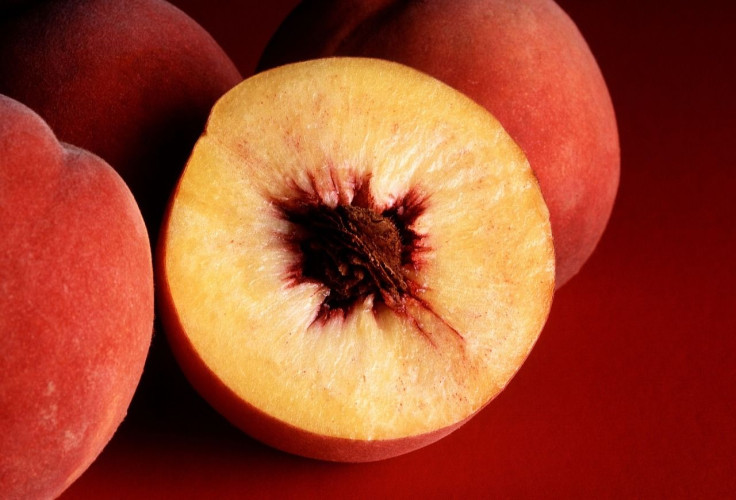Take Probiotics For A Healthy Vagina: How Good Bacteria Fights Against Yeast Infections, Diseases

Ladies, does the thought of countless bacteria living in your vagina make you shudder? Well, it shouldn’t. The vagina is home to over 50 unique species of bacteria, just like the digestive tract, which has over 400 different types. Far from causing damage, though, many of these bacterial strains are probiotics — the good bacteria.
As with the gut, vaginal microflora needs to be balanced for good health. If there are no friendly bacteria to keep pathogens in check, the pathogens can cause a wide range of diseases and infections.
How Do Probiotics Work in the Vagina?
Probiotics in the vagina, primarily Lactobacillus strains, act as a defensive force by colonizing the vaginal tract, stopping pathogenic microorganisms from setting up base.
It also:
- Promotes an acidic vaginal environment to discourage the growth of bad bacteria by producing lactic acid.
- Produces hydrogen peroxide to help create an inhospitable environment for the “unwanted guests”.
- Stops microbes from adhering to the vaginal wall, and may also be able to displace those that have taken hold.
- Plays a key role in stimulating the body’s immune responses, which strengthens its ability to fight off infection.
- Actively fights bad microbes, and is often successful at disabling infection-causing bacteria, yeasts and viruses.
Which Vaginal Conditions Can Be Treated with Probiotics?
The link between probiotics and vaginal health has been studied quite extensively, and studies have shown promising results for conditions like:
- Yeast Infections: Over three quarters of all women suffer from vaginal yeast infections (yeast vaginitis or candida infection) at least once in their lives, while others get them quite frequently. The symptoms include irritation, “curdled” or white discharge, unbearable itching in the vagina — the worst of them all.
Vaginal yeast infections can be caused by a variety of factors, including low immunity, hormonal changes, high-sugar foods, tight clothing, douching, or antibiotics. The culprit is normally Candida albicans, but the infection may also be caused by C. krusei, C. glabrata, and C. tropicalis.
Low levels of estrogen and changes in vaginal pH have been linked to a drop in Lactobacillus populations, which allows bad bacteria to take their place. Fermented probiotic foods and probiotic supplements with live colonies of Lactobacillus can help boost the good bacteria in the vagina, setting the scale back to normal.
- Bacterial Vaginosis: Also known as BV, it’s a common complaint in pre-menopausal women. The symptoms include vaginal itching, a burning sensation when you urinate, thin grayish discharge, and a “fishy”, unpleasant odor from the vagina.
BV has been linked to a high pH level (over 4.5) in the vagina, as well as low levels of Lactobacillus bacteria in the vaginal tract. It may be caused by potentially pathogenic bacteria like Atopobium vaginae , Gardnerella vaginalis , Peptostreptococcus, Megasphera, Bacteroides, Mycoplasma hominis, Mobiluncus, and Prevotella.
While the bacteria listed above are not necessarily to blame, there are fewer strains of bacterial species in women with good vaginal health. A greater diversity in vaginal microflora has been found in women who suffer from BV than in those who do not have the disease.
Benefits of Probiotics for Vaginal and Bladder Health
In addition to maintaining better vaginal health, probiotic Lactobacillus acidophilus supplements can also help improve bladder health and keep urinary tract infections (UTIs) at bay. Oral intake of Lactobacillus rhamnosus and Lactobacillus reuteri has also shown promising results.
BV and UTIs are typically treated with antibiotics, while yeast infections are treated with antifungals. Probiotic supplements can help restore the bacterial balance in the vaginal and urinary tracts after antimicrobial treatment, which kills both good and bad bacteria.
Many infections are caused by a drop in immunity, and vaginal health is linked to hormones. Studies have linked probiotic-rich diets with strengthened immune systems as well as hormonal balance, which makes them an important part of a healthy diet.
Healthy vaginal bacteria also get passed on to your child when you give birth, so they’re protected by a thriving colony of helpful bacteria from the day they enter the world.
How to Use Probiotics for Vaginal Health
Before you start taking supplements or buying tons of sauerkraut and probiotic yogurt in the attempt to keep your vagina healthy, do your homework. It’s crucial to understand which probiotics are right for your needs, how you should take them, be it in foods, oral or suppository form — and when is the best time to take probiotics.
If you suffer from an infection or a specific medical condition, you should consult a medical professional for advice. You may need antimicrobial treatment to get rid of the harmful bacteria first, along with probiotic foods or supplements that will enhance the population of friendly bacteria in the bladder, urinary tract and vagina.
If you’re using probiotics for prevention, it’s best to eat a diet rich in fermented food and dairy products, and a daily oral supplement if necessary. Take supplements that contain various Lactobacillus species like L. acidophilus, Lactobacillus GG, L. rhamnosus, L. reuteri, L. plantarum and L. salvarius, not acidophilus alone.
After a course of antibiotics, your vaginal tract is like an empty house. You want good bacteria to move in, rather than the really bad squatters who’ll trash the place.
Mary Toscano is a contributing writer to Probioticshub.com . She is a mother of two toddlers and enjoys volunteering for animal shelters. When Mary is not busy writing about health and wellness, she is exploring tips and tricks about healthy living and clean eating. She is a great resource for probiotic foods and fitness lessons that you can follow all year round. Her inspiring approach to health will keep you motivated to pursue your wellness goals.



























